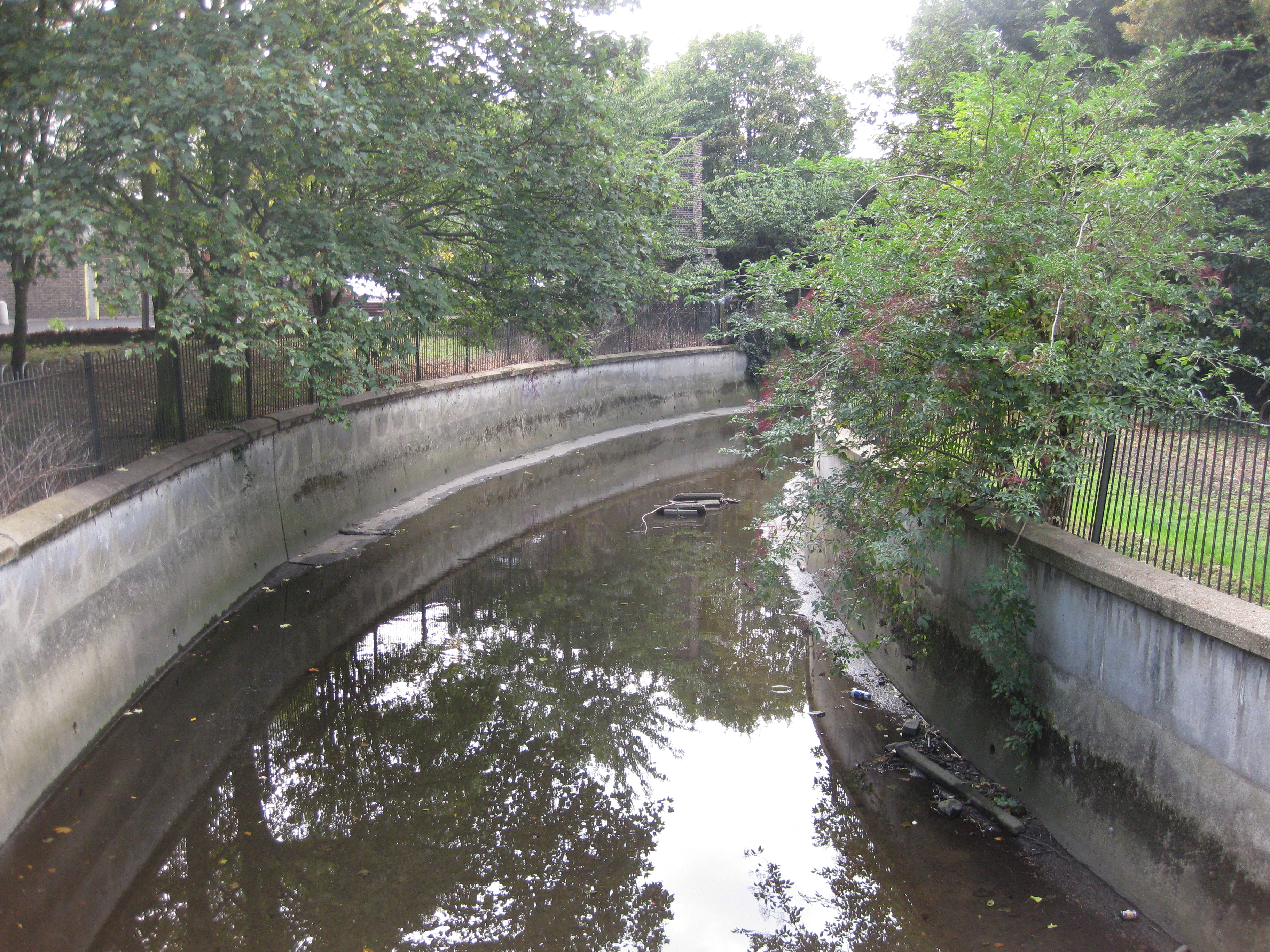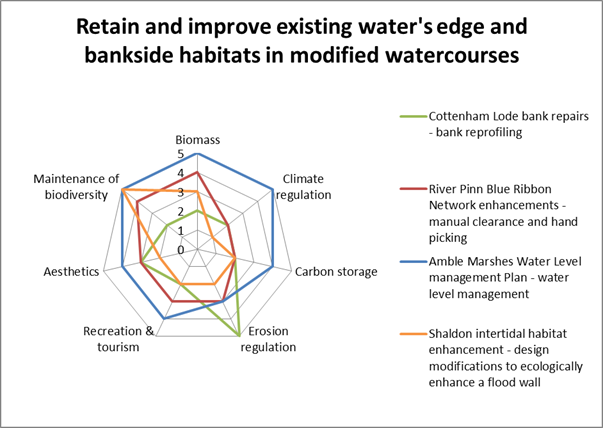 These activities aim to maximise the habitats that exist in a modified water body, by allowing vegetation to grow and recolonise where it is able to do so. This is focused in areas where it is not possible to remove FCERM modifications or undertake habitat restoration. This can occur if modifications are still needed to perform their function and there is no effective or sustainable alternative.
These activities aim to maximise the habitats that exist in a modified water body, by allowing vegetation to grow and recolonise where it is able to do so. This is focused in areas where it is not possible to remove FCERM modifications or undertake habitat restoration. This can occur if modifications are still needed to perform their function and there is no effective or sustainable alternative.
Techniques
There are a range of techniques that can be used to implement this activity, depending upon the type and maintenance requirements of the water body in which it is going to be applied:
- Retain marginal habitats (including fallen trees and branches) unless they compromise flow conveyance or the effectiveness of the modifications
- Use sensitive vegetation management techniques which do not impact upon habitats, and only focus on parts of the water body which affect the way the modifications work. Techniques could include hand-picking or selective cutting of in-channel and bankside vegetation, coppicing or pollarding trees instead of felling them, only cutting the centre of the channel, and using herbicides to control vegetation instead of cutting
- Use boat-mounted vegetation cutting or herbicide spraying equipment to allow work to be undertaken in the main channel without disturbing the margins and banks
- Change the frequency of maintenance activities, so habitats have time to recover before they are disturbed again
Benefits
- Direct ecosystem benefits associated with the retention of habitats and the maintenance of biodiversity
- Aesthetic improvements to the watercourse, by providing a more natural look
Case Study Benefits
This diagram displays a comparison of benefits scores (using a high-level ecosystem service assessment methodology) associated with the techniques used in each case study. More details on the methodology can be found here.